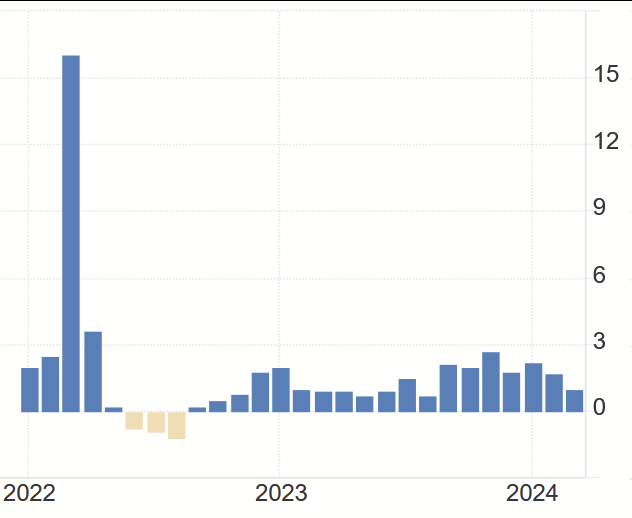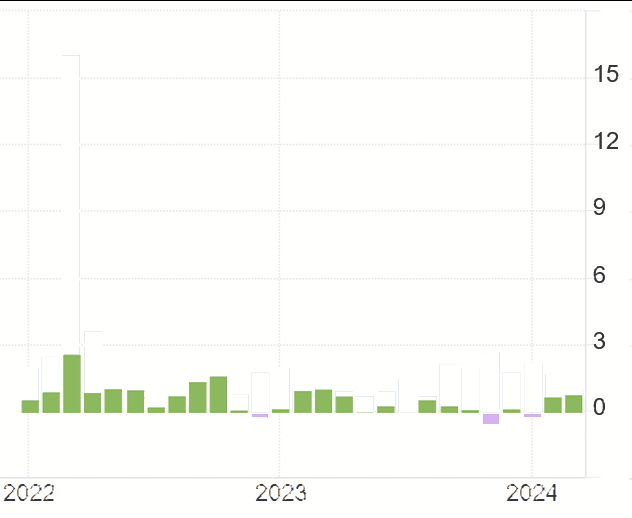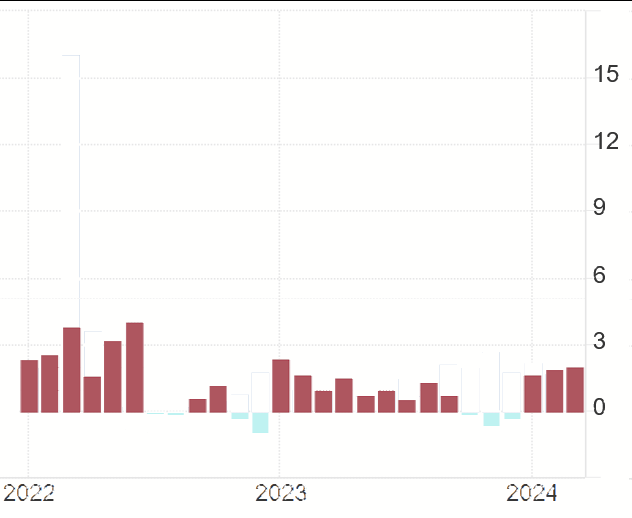There are more sanctions here than in North Korea, Syria and Iran (summed together!) How do we survive?!#russia #lifeinrussia #lifeinrussiaundersanctions #sa...
Wouldn’t that relatively low price be offset by Russian salaries being way lower than American ones? Even the median salary in Moscow, where the creator lives, is significantly lower. Recent figures on purchasing power in Russia only go back to 2022, where $1 is equivalent to approx. 30 rub. (source: OECD) That would make the “true” price of that wedge of cheese $6.67
My mother is Russian and has some contacts and family in Russia. She went to Saint Petersburg last year for personal matters. She often talks about how little the ruble is worth and things being more expensive. Is she exagerrating?
Uh, a median wage will always have 50 percent of people above and below it, because that’s how a median is defined: as the middle of a number sequence.
I think you meant the average wage, which is ~$60,000 in the US and in Russia it’s $15,000 (nominal) or $41,333 (PPP*). For reference, the average income for Poland is $21,000 (nominal) or $49,000 (PPP*).
Two-thirds of Americans earn below $60,000. Russia’s income inequality is similar to that in the US: both seem to have a Gini coefficient around 0.4.
Therefore, we can assume that it’s a similar distribution in Russia, aka two-thirds earning below $15,000 (nominal) or $41,333 (PPP*).
(*2022 PPP values from OECD)
Taxation also affects things. An NYT article mentions this (April 27, 2024):
Most Russians pay income tax at a flat rate of 13 percent, significantly lower than what taxpayers in the United States and Western Europe typically pay. In an interview in March, Mr. Putin said he planned to introduce a new progressive tax scale in part to alleviate poverty, a popular message among many Russians who support increasing taxes on the country’s rich, which have historically been low.
The article is about the government looking to raise the tax rate to 15 percent for people earning above $10,000 (nominal).
Using official statistics, consumer prices in Russia since February 2022 have risen by 20-21% in total. For the same time period it’s 14% in the European Union and 10% in the United States. This is similar to their inflation rates for 2022+2023. If I add up month-on-month CPI increases for the period by hand, it’s 56% for Russia, 18% for the EU, and 40% for the US. I don’t know where that discrepancy comes from, did I do something wrong? I used Consumer Price Index data from Tradingeconomics.com
Finally there’s incomes. Wage growth in the EU and US is on average similar to their inflation rates. But in Russia it’s 36%, significantly higher than the inflation rate of 21%. Of course there’s the matter of how that growth is distributed, but at a first glance it suggests that not as many Russians suffer from the higher prices as the high inflation rate would suggest, though this will vary by region.
deleted by creator
deleted by creator
To be fair, the median for income in Russia is somewhat lower, but yeah prices aren’t exactly skyrocketing there.
that’s some expensive cheese, a typical price for cheese here is around 1 ruble for 1 gram (you can get it like 2x cheaper if you buy cheap cheese)
also, I haven’t watched the video but cheese is typically sold in 200g packs
Wouldn’t that relatively low price be offset by Russian salaries being way lower than American ones? Even the median salary in Moscow, where the creator lives, is significantly lower. Recent figures on purchasing power in Russia only go back to 2022, where $1 is equivalent to approx. 30 rub. (source: OECD) That would make the “true” price of that wedge of cheese $6.67
My mother is Russian and has some contacts and family in Russia. She went to Saint Petersburg last year for personal matters. She often talks about how little the ruble is worth and things being more expensive. Is she exagerrating?
deleted by creator
Uh, a median wage will always have 50 percent of people above and below it, because that’s how a median is defined: as the middle of a number sequence.
I think you meant the average wage, which is ~$60,000 in the US and in Russia it’s $15,000 (nominal) or $41,333 (PPP*). For reference, the average income for Poland is $21,000 (nominal) or $49,000 (PPP*). Two-thirds of Americans earn below $60,000. Russia’s income inequality is similar to that in the US: both seem to have a Gini coefficient around 0.4. Therefore, we can assume that it’s a similar distribution in Russia, aka two-thirds earning below $15,000 (nominal) or $41,333 (PPP*). (*2022 PPP values from OECD)
Taxation also affects things. An NYT article mentions this (April 27, 2024):
Using official statistics, consumer prices in Russia since February 2022 have risen by 20-21% in total. For the same time period it’s 14% in the European Union and 10% in the United States. This is similar to their inflation rates for 2022+2023. If I add up month-on-month CPI increases for the period by hand, it’s 56% for Russia, 18% for the EU, and 40% for the US. I don’t know where that discrepancy comes from, did I do something wrong? I used Consumer Price Index data from Tradingeconomics.com
Finally there’s incomes. Wage growth in the EU and US is on average similar to their inflation rates. But in Russia it’s 36%, significantly higher than the inflation rate of 21%. Of course there’s the matter of how that growth is distributed, but at a first glance it suggests that not as many Russians suffer from the higher prices as the high inflation rate would suggest, though this will vary by region.
Consumer Price Index, month-on-month change in percentage points
Blue: Russia
Green: European Union
Red: United States